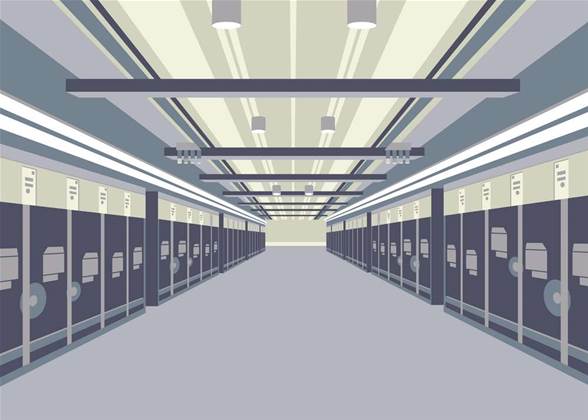Three Victorian universities plan to disassemble their internal data centres and consolidate their compute power in a new facility in Melbourne's South East.

Monash University, RMIT (The Royal Melbourne Institute of Technology) and the University of Melbourne have signed a multi-million dollar deal with Fujitsu for ten years, consolidating all three of their production data centres at the Japanese outsourcing company's Noble Park data centre.
The three universities will initially move their enterprise computing environments into 500 square metres worth of Fujitsu's existing data centre.
They will then use up to 600 square metres of a new adjacent 2000 metre square high-density data centre Fujitsu plans to build as part of the agreement.
The three universities will continue to own and manage their own rack, server and other IT infrastructure - but will lease Fujitsu's facility in a 'co-location' style arrangement.
Allan Morris, executive director of information technology services for RMIT confirmed that the university intended to close its own data centre as a result of the deal.
"We don't believe universities should be in the business of building data centres," he told iTnews. "RMIT will initially be taking 200 square metres of data centre space from Fujitsu's existing facility, which is about the same as what we have on campus already."
The consolidation project is the first stage in a long-term view by the Universities to create a shared pool of computing resources to be delivered under a "cloud computing" model.
"We already collaborate in many areas, including networks," Morris said. "The days of universities hosting and supporting all the systems required are gone - cloud computing is certainly the way of the future and we're already looking at that for some of our applications."
The three Universities were expected to move into Fujitsu's Noble Park data centre by January next year, with the new data centre construction beginning in 2011.
Searching for the new cool
The consolidation project will also take advantage of radical new power-saving data centre designs such as free cooling.
"IT directors globally have a responsibility to reduce our carbon footprint," Morris said. "Today's data centres are so energy hungry; it is something we have to change."
Michael Gunton, general manager of data centre services at Fujitsu Australia
But the deal with the universities compels Fujitsu to undertake a "feasibility study" into looking at alternative sources of energy and cooling techniques.
"We won't be limited to what power we get off the grid," he said. "We are looking at a gas supply from the Dandenong region, and looking closely at alternative sources of energy such as wind and solar."
Gunton said Fujitsu is looking into the use of free cooling after experimenting with the technology at its Homebush (Sydney) and Perth data centres.
The highest temperature recorded at Noble Park is 46 degrees celsius, the lowest 0.5 degrees. The average maximum temperature is 19.7 degrees, the average minimum is ten degrees and the overall average is 14.5 degrees.
"It's favourable conditions for free cooling," Gunton said. "We expect that more than 60 percent of the time we will be utilising some form of free cooling in the new facility in either free cooling or mixed cooling mode."
Gunton is uncertain as to how far down the free cooling path the Noble Park facility will go.
"We've committed to the universities that we will implement free cooling," he said. "But we have to weigh up risks and rewards."
Direct free cooling, which sees outside air filtered before it enters the data centre at set points in temperature, is viewed with some risk.
"Consider the dust storms in Sydney and Brisbane, the bush fires in Victoria, and you wonder whether air filtration systems would meet our demands," he said.
A more likely scenario is a form of indirect free cooling, in which ambient outside air is use to chill water used in the cooling systems within the data centre.
To "truly call it free cooling", Gunton is also looking to cut out the operational costs of fans, filters and water pumps in the cooling systems.
"We are looking into whether we can use renewable energy like solar and wind for these operations," he said.
Speeds and feeds
Communications to the Noble Park facility include links to and from Optus, Telstra, Uecomm, AARNet, PIPE, Nextep and Verizon.
Initially, the universities have demanded Fujitsu provide them with one kilowatt per square metre of power, but over the life of the contract they have specified incremental increases to densities of 2.2 kilowatts per square metre.
Gunton said it is safe to say the universities should eventually expect to run at between two to three kilowatts per rack, with higher density loads available should academics want to retrofit their own in-row cooling solutions into Fujitsu's chilled water schema.
"Doing that I they might achieve upwards of six and ten kilowatts per rack," he said.
Gunton said Fujitsu's Noble Park land holding has sufficient space to build another 6000 square metres of data centre space in the future.





.png&h=140&w=231&c=1&s=0)



_(26).jpg&w=100&c=1&s=0)

 iTnews Executive Retreat - Security Leaders Edition
iTnews Executive Retreat - Security Leaders Edition












_(1).jpg&h=140&w=231&c=1&s=0)



